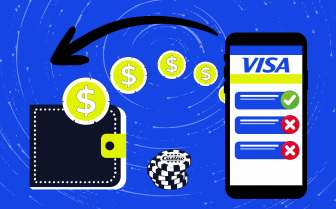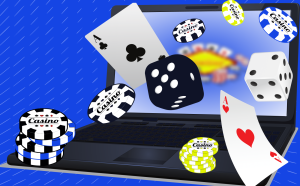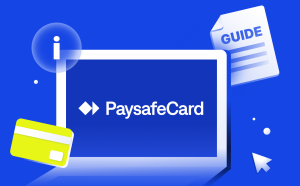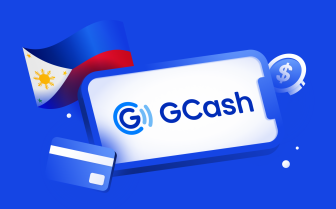Table of content
In the Philippines, people actively use GCash for a wide range of purposes — from paying for online purchases and services to settling debts with friends. Often, even at markets, you can pay a vendor via a QR code in the app instead of using cash. This article highlights both the advantages and minor drawbacks of GCash and explains how it works without using complicated technical terms.
What Exactly Is GCash?
At its core, GCash is a mobile wallet — a place to store money digitally on your phone. You can use it to pay bills, shop online, send and receive money, or even save and invest. It’s run by Globe Fintech Innovations (Mynt) and works on both Android and iOS. The only thing you truly need to start is a working mobile number and a bit of time to set it up.
The big win — you don’t have to queue at a bank or carry cash. That alone makes it worth trying.
Setting It Up — Easier Than It Sounds
First, grab the GCash app from Google Play or the App Store. Open it, type in your phone number, and they’ll text you a one-time password (OTP). Enter that, and you’re halfway there.
Next comes the “Know Your Customer” step. You take a selfie and upload a valid ID so they can confirm it’s you. Once approved, you’ll get higher limits and access to all features. Then set up your MPIN — a 4-digit passcode you’ll enter every time you move money. Keep it private and treat it like your ATM PIN.
Adding Money to Your GCash Wallet
There’s no shortage of options for topping up:
Bank transfer — via InstaPay or PESONet from your bank’s app.
Over-the-counter — hand over cash at 7-Eleven, SM, Villarica Pawnshop, or other partner outlets.
Remittance services — receive money directly from Western Union or MoneyGram.
Debit card linking — connect your card to fund GCash instantly.
Bank transfers via InstaPay are almost instant. PESONet can take a few hours or even overnight. Over-the-counter top-ups are quick, but you might have to wait in line during peak hours.
Paying with GCash
The convenience of the app is that it’s not only suitable for paying for online purchases, services, and entertainment, but in everyday life, it functions almost like a regular bank card. For example: you’re at a weekend market, you buy some snacks, and instead of digging for coins, you just scan a QR code with your phone. Done in seconds.
You can:
Pay at physical stores via QR code scanning.
Check out on e-commerce sites using GCash.
Settle bills for electricity, water, internet, tuition, and even government fees inside the app.
Buy mobile load for yourself or someone else.
Paying for online games and entertainment: for example, many online casinos with popular slots accept GCash as one of their payment methods.
The receipts are digital, so you can always go back and see exactly where your money went.
Sending Money to People
For example, you need to send 500 PHP to a friend. Just open GCash, tap “Send Money,” type their mobile number, enter the amount, and confirm with your MPIN. Transfers to another GCash account are free and instant.
Sending to a bank? Possible too — but some transfers have small fees. You can also connect PayPal if you get paid that way.
A quick tip: always double-check the number before you hit “Send.” Sometimes people send money to the wrong person just because of a typo.
Security — How Safe Is GCash?
It’s secure as long as you play your part. Every transaction needs your MPIN. The app sends SMS alerts for each payment or transfer. You can add fingerprint or Face ID login. And if your phone goes missing, there’s an option to lock your account remotely.
The one thing GCash can’t protect you from is sharing your codes. If someone asks for your OTP or PIN, they’re not from GCash — they’re trying to scam you. Ignore and block.
Beyond Payments — Extra Features Worth Trying
GCash is more than just a wallet:
GCash Mastercard — a physical card you can use for ATM withdrawals and in-store payments.
GSave — a savings feature with partner banks that earns interest.
GInvest — start investing in mutual funds from as little as 50 PHP.
GInsure — quick, affordable insurance plans.
GCredit — a revolving credit line based on your GScore, which is your trust rating inside GCash.
Transaction Limits and Fees
Fully verified users can cash in or cash out up to 100,000 PHP per month. If you’re unverified, your limits are much smaller.
Most GCash services are free — especially GCash-to-GCash transfers and bill payments. But there can be fees for certain bank transfers or over-the-counter deposits once you exceed the free limit. The exact rates are listed in the app, and they do change occasionally.
Common Issues and How to Avoid Them
Delayed transactions — usually a network hiccup; keep screenshots as proof.
Scams — anyone asking for your PIN or OTP is not legitimate.
Cash-in problems — only use official GCash partners to avoid disputes.
Final thought
GCash isn’t perfect — no app is — but once you’ve tried it for everyday payments, it’s hard to go back to lining up in banks or dealing with exact change. For most people in the Philippines, it’s not just a convenience anymore; it’s part of daily life.
GCash saves time, removes the hassle of small change, and works in thousands of places. The best part? It works 24/7, even when banks are closed. Whether you’re paying a jeepney fare, ordering from a food app, or sending your sibling some school money, it’s all in one app.
Page Information
Related

Here’s a quick overview of common withdrawal issues, their causes, how to avoid them, warning signs to look out for, and what to do if problems occur.

While the workings of traditional land-based casinos can appear complicated, online casinos operate on an even more advanced level. To grasp how they function, it’s essential to understand that the main priority for everyone in the online industry.

Paysafecard is a prepaid payment method that lets you fund online casinos securely and anonymously, making it a convenient choice for responsible gaming.

Everything you need to know about Neosurf in general, its payment process, and the most essential aspects of using this payment option.




